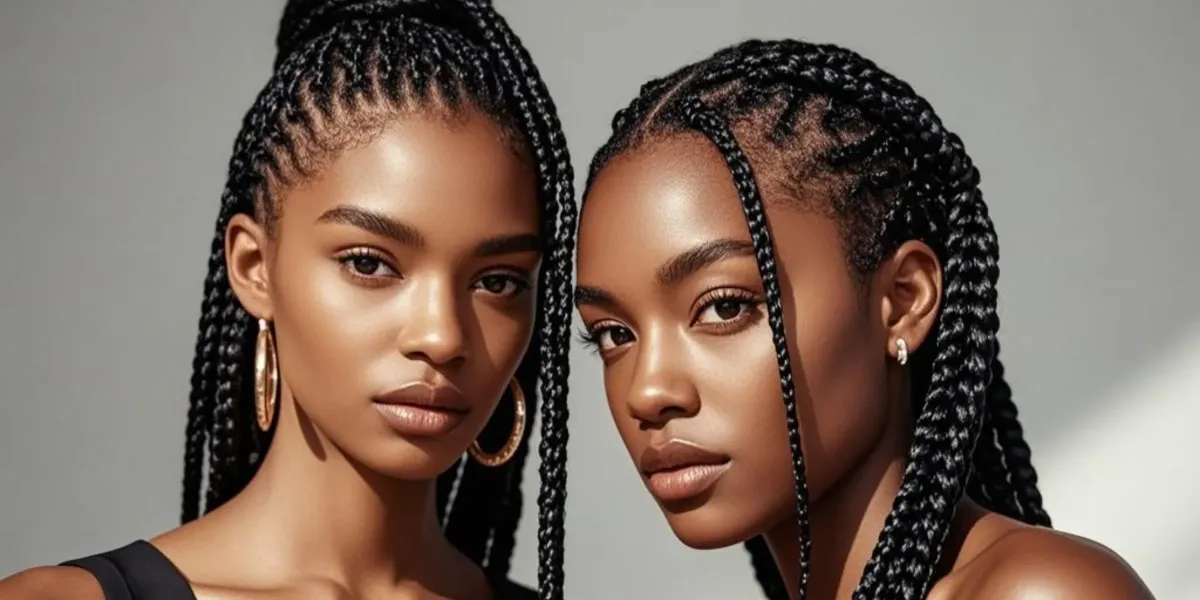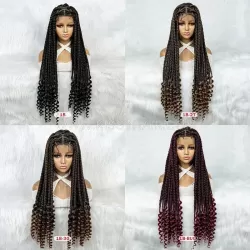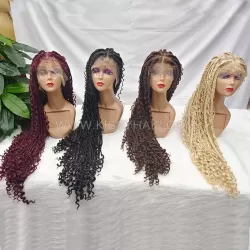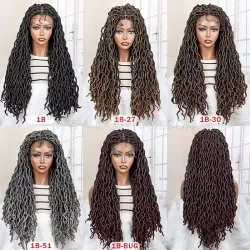Knotless Braids vs Knot Braids: Which is Better?

In the dynamic world of hair styling, braids have stood the test of time as a versatile and culturally significant hairstyle, particularly within the black hair community. Among the myriad of braiding techniques, knot braids and knotless braids have emerged as two prominent methods, each with its unique characteristics and benefits. As a professional in the hair industry, understanding the differences between these styles is crucial for making informed decisions that align with your business goals and client needs. In this comprehensive guide, we’ll explore the intricacies of knot braids and knotless braids, comparing their advantages, drawbacks, and suitability for various scenarios. By the end, you’ll be equipped with the knowledge to determine which braiding technique is better suited for your salon or product line.
Understanding Knot Braids
What Are Knot Braids?
Knot braids, often referred to as traditional braids, have been a cornerstone of hair styling for decades. This technique involves starting the braid with a small knot at the scalp, which secures the extension hair in place. It’s a method that’s both familiar and widely practiced across salons.
Benefits of Knot Braids
Efficiency: The knotting method allows for quicker installation, making it a time-efficient option for stylists and clients alike.
Affordability: Due to the reduced time commitment, knot braids often come at a lower price point, appealing to budget-conscious customers.
Accessibility: The technique is relatively straightforward, making it easier for novice stylists to learn and execute.
Drawbacks of Knot Braids
Drawbacks of Knot Braids
Tension and Discomfort: The knots can create significant tension on the scalp, leading to discomfort or even pain for some clients.
Aesthetic Limitations: The visible knots can detract from the natural look of the braids, especially as the hair grows out.
Potential for Damage: The tight knots may contribute to hair breakage and traction alopecia if not installed and maintained properly.
Understanding Knotless Braids
What Are Knotless Braids?
Knotless braids represent a modern evolution in braiding techniques. This method begins with the client’s natural hair, gradually incorporating extension hair without the use of a knot. The result is a sleek, seamless style that’s gaining traction in the industry.
Benefits of Knotless Braids
Natural Appearance: The absence of knots creates a flat base that mimics the look of natural hair growth, offering a polished finish.
Reduced Tension: By distributing the weight of the extensions more evenly, knotless braids minimize stress on the scalp, promoting healthier hair.
Enhanced Comfort: Clients often report less discomfort and irritation, making knotless braids ideal for long-term wear.
Drawbacks of Knotless Braids
Time-Intensive Installation: The meticulous process of feeding in extensions requires more time, which can translate to higher service costs.
Skill Requirement: Mastering the knotless technique demands practice and precision, potentially necessitating additional training for stylists.
Maintenance Considerations: While both styles require regular care, knotless braids may need occasional touch-ups to maintain their flawless look.
Key Differences and Considerations
When choosing between knot braids and knotless braids, several factors come into play that can impact your business and client satisfaction:
Installation Time: Knot braids are faster to install due to the knotting method, while knotless braids can take significantly longer—sometimes twice as long—depending on the complexity of the style.
Cost: The extended time for knotless braids often leads to higher service fees, requiring businesses to balance profitability with competitive pricing.
Comfort and Scalp Health: Knotless braids are gentler on the scalp, making them a better choice for clients with sensitive scalps or those prone to tension-related issues.
Appearance: Knotless braids excel in delivering a natural, undetectable look, while knot braids may show visible knots over time.
Longevity: Both styles can last weeks with proper care, but knotless braids may retain their neatness longer due to less tension and no knots to unravel.
Suitability for Different Hair Types: Knotless braids are ideal for finer or weaker hair due to their reduced pulling force, while knot braids can work well for thicker, coarser hair when done with care.
Skill Level Required: Knot braids are easier for beginners to master, whereas knotless braids demand advanced skills and practice.
Market Trends and Business Implications
The hair industry is shifting toward styles that prioritize hair health and natural aesthetics—trends that knotless braids perfectly embody. As a protective style that minimizes damage while offering a sleek, modern look, knotless braids are increasingly popular, driven by social media influencers and growing client awareness of scalp health.
For businesses in the black hair and wig industry, this shift offers strategic opportunities:
Training and Education: Investing in stylist training for knotless braiding techniques can differentiate your salon and attract clients seeking this premium service.
Product Development: Wig manufacturers and hair extension suppliers might develop products tailored for knotless braids, such as pre-stretched or lightweight extensions to streamline installation.
Marketing Strategies: Highlighting the benefits of knotless braids—through before-and-after photos, client testimonials, or educational content—can boost demand and client engagement.
Pricing Models: With the higher time investment, consider tiered pricing or service packages to cater to diverse budgets while ensuring profitability.
Conclusion: Making the Right Choice for Your Business
In the debate of knotless braids versus knot braids, there’s no universal winner—each technique shines in different contexts. Knot braids offer speed and affordability, making them a reliable choice for clients seeking a quick, cost-effective style. Knotless braids, however, stand out for their comfort, scalp-friendly design, and natural appearance, appealing to those who value hair health and aesthetics.
As a professional in the black hair and wig industry, your decision hinges on understanding your clients’ preferences and your business’s capabilities. By mastering both techniques—or specializing in one—you can cater to a broad market, enhance client satisfaction, and position your brand as a leader in protective styling. Whether you lean toward the efficiency of knot braids or the rising demand for knotless braids, this knowledge empowers you to align your offerings with industry trends and client needs, driving success for your business.






Leave a Comment